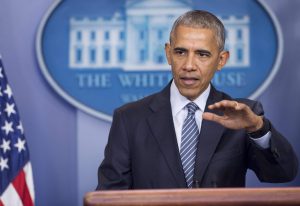
The Obama administration is hurrying to approve a proposal that could mean up to $2 billion in additional funding annually for the nation’s poorest children. The Department of Education is pushing through the policy, which was first proposed in September, in the hope that it be adopted before Trump’s inauguration.
The proposal implements the requirement in Title 1 of the Elementary and Secondary Education Act (ESEA), as recently revised by the Every Student Succeeds Act (ESSA), that federal funds must supplement and not supplant state and local funds. The Department of Education stated, “The proposal will help ensure that federal funds are additive and do not take the place of state and local funds in low-income schools, in keeping with the longstanding commitment under Title I that the nation’s highest need students receive the additional financial resources necessary to help them succeed. The proposed regulation would mean up to $2 billion in additional state and local funding for high poverty schools.” Two-thirds of English Language Learners (ELLs) are from low-income families, so the policy change could be used to improve the education of nearly three million ELLs in public school systems.
Wade Henderson, president and CEO of The Leadership Conference on Civil and Human Rights said, “Plainly put, our system of funding education is unfair and unwise and this draft rule is an important step toward improving an intolerable status quo. Our states and districts routinely spend less money to educate children facing greater challenges. This rule doesn’t solve this massive problem—no single rule could—but it’s a step in the right direction and brings us closer to a more just education system.”
Precise amounts of funding would depend on how districts comply with the federal requirements, however, the proposal ensures that funding from federal sources be additional to state and city funding.
The department is encouraging districts to meet the requirement by increasing overall funding for education, with a focus on putting new resources in Title 1 schools, and, thus, avoid shifting resources from other schools. This should also discourage districts from forcing staff transfers to other schools, and instead, improve programs that will attract staff to Title 1 schools.
The proposal is flexible and makes exceptions for cases in which discrepancies in districts correspond to extra funding for students with disabilities, ELLs, and other special cases; for small schools where 100 or fewer students are enrolled, excludes minor annual fluctuations, and excludes state or local funds spent on district-wide activities.
The main aim of the regulation is to reduce the funding gap between schools serving low-income students and those with more affluent students. According to the U.S. Department of Education:
- Low-poverty and low-minority schools are twice as likely to offer a full range of math and science courses as high-poverty and high-minority schools;
- On average, low-poverty schools offer three times as many AP classes as high-poverty schools;
- Low-minority schools are twice as likely to offer dual enrollment or dual credit opportunities, compared with high-minority schools;
- Educators in high-poverty and high-minority schools are more than twice as likely to be in their first or second year of teaching, compared to their peers in low-poverty and low-minority schools.
Details of the proposed regulation can be found here.






